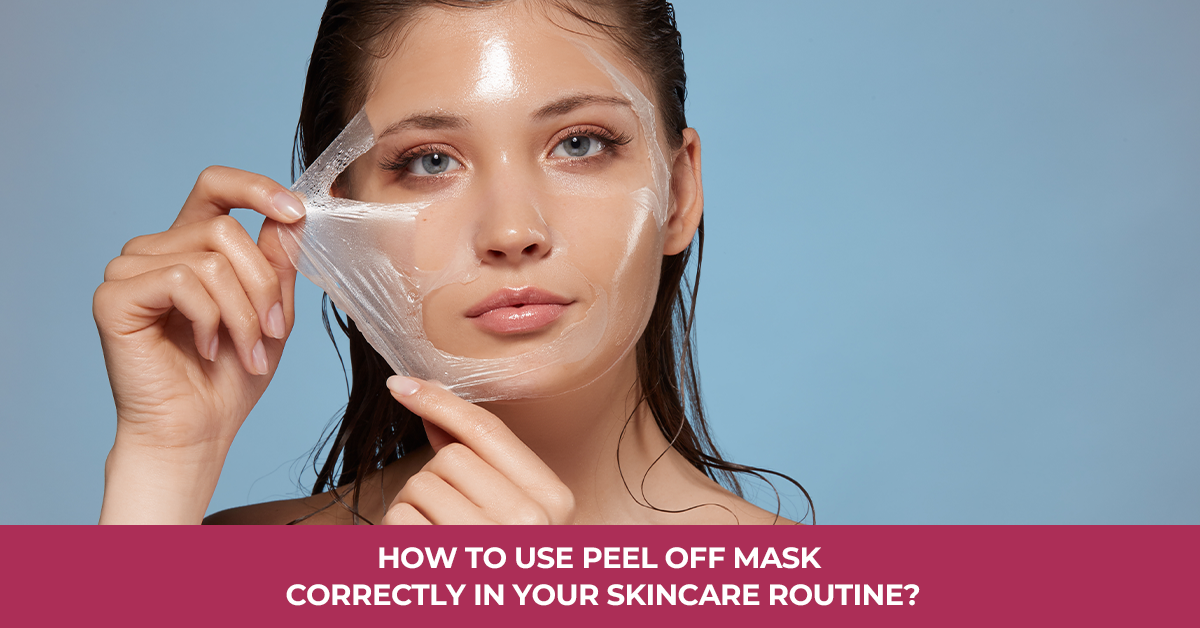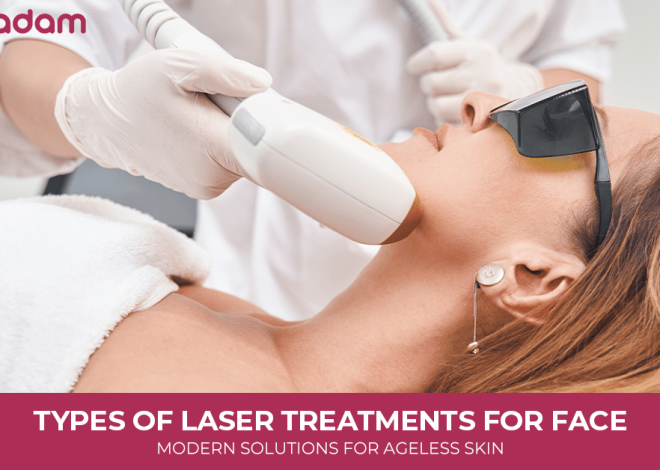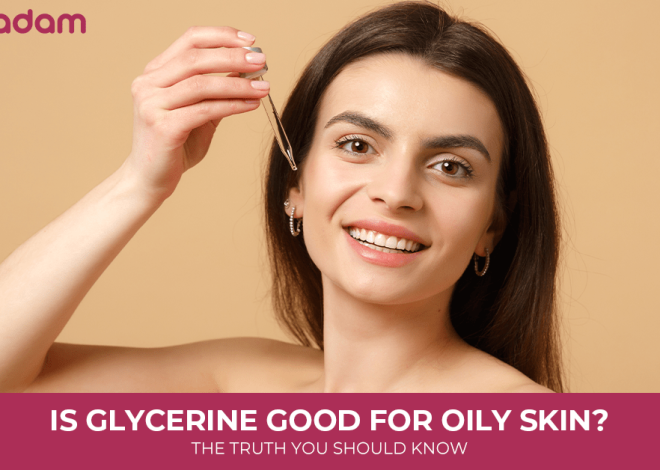
How To Use Peel Off Mask Correctly In Your Skincare Routine?
The thought of peeling something off the skin can be intimidating. However, peel-off masks typically come in a gel or liquid form and offer numerous skin benefits.
A peel-off mask is a kind of face mask. As the name suggests, it is supposed to be peeled off from the skin once dried. These masks exfoliate the skin and eliminate ‘dirt’’ and oil from the pores.
This guide on how to use peel off mask will help you explore the concept of peel-off masks and how they work. Also, it will elaborate on how these aspects together help in achieving optimal skin health.
Table of Contents
What Are Peel-off Masks?
Peel-off masks are special skincare products that come in gel-like or liquid form. It takes the shape of a rubbery consistency when dried. The unique polymers, natural extracts, vitamins, and minerals that go into formulating these masks provide numerous skin benefits.
During application, the flexible layer adapts to the contours of the face, allowing active ingredients to penetrate deeply into the skin. This leads to long-lasting results.
What is The Right Way to Use a Peel-Off Mask?
Confused about the right way to use a peel-off mask? Don’t worry. Here are the steps to use it properly:
- Gently cleanse your face with a suitable cleanser. This removes dirt and grime, preparing your skin for smooth application.
- Apply an even, thick layer of the peel-off mask. Avoid the eye area, lips, and eyebrows.
- Let the mask sit for 15 minutes. Peel it off from the edges, starting from the forehead and moving downward.
- Rinse your face with cold water, pat it dry, and apply a moisturizer.
These quick steps will help you achieve a healthy, refreshed glow in minutes.
Different Types of Peel-off Masks and Their Uses
The best thing about peel-off masks is that they are available in a variety of types, each made to target specific skin issues. The following are some common types of peel-off masks and their uses.
| S.No | Peel-off mask type | Uses |
| 1 | Charcoal Peel-Off Mask | Detoxifies the skin, eliminates blackheads, soaks excess oil, and unclogs pores. Best for oily and acne-prone skin. |
| 2 | Gold Peel-off Mask | Brightens the skin, boosts collagen production, and provides a luxurious glow. For dull and aging skin. |
| 3 | Vitamin C Peel-Off Mask | Improves skin radiance, evens out skin tone, and battles free radical damage. For normal, dry, and combination skin. |
| 4 | Marine Algae peel-off gel mask | Prevents signs of aging. Minimizes the irritation and redness of the skin. Suitable for all skin types. |
| 5 | Charcoal algae peel-off mould mask. | Purifies and improves skin texture and skin sebum control. Recommended for combination and oily skin. |
| 6 | Fruit-based peel-off masks (orange, papaya, etc.) | Exfoliates naturally, brightens the skin, and improves texture. Recommended for dull, uneven skin tone. |
5 Benefits of Using Peel-off Masks
Here are the top five benefits of peel-off masks, highlighting their significance in achieving optimal skin health.
Benefit 1: Removes Dead Skin Cells
Eliminating dead skin cells is important for unclogging pores and preventing acne breakouts. Peel-off masks help by adhering to the skin, drying, and then peeling off, effectively removing dead skin cells and impurities.
Benefit 2: Unclogs Pores
Peel-off masks are highly effective in unclogging pores by adhering to the skin’s surface and removing impurities, excess oil, and dead skin cells from deep within the pores. Clogged pores can lead to acne formation. The extracts and ingredients in peel-off masks work gently to eliminate dirt and impurities.
Benefit 3: Provides Deep Cleanse
A deep cleanse is essential to maintain clear and healthy skin, as it helps to keep clogged pores, blackheads, and acne away. As the peel-off dries and hardens, it adheres to your skin and extracts dirt, impurities, and dead skin from deep inside the pores.
Benefit 4: Improves Skin Texture
Peel-off masks, like fruit-based peel-off masks, help to exfoliate dead skin cells and unclog pores. While the mask is peeled off, it helps to ‘’scrub away’’ impurities, leaving the skin feeling smoother and softer.
Benefit 5: Boosts Radiance
The ingredients in peel-off masks can enhance skin radiance by removing impurities and dead skin cells. They also provide nourishment and hydration. Gold and vitamin C peel-off masks help improve skin radiance, revealing a brighter, more youthful complexion.
What Should We Apply After the Peel-off Mask?
To ensure long-lasting results and maximize the benefits of the peel-off mask,. You should apply a moisturizer and serum after the peel-off session to help rehydrate and nourish your skin after the exfoliating effect of the peel-off mask.
Main points to remember:
Hydration is key: Peel-off masks can have a tightening effect on your skin. So, using a moisturizer is important to replenish lost moisture.
Consider a toner: The Use of a toner after the peel-off mask can help balance your skin’s pH level and further eliminate any residual impurities.
Serum for targeted needs: As per your skin problems, you can use a targeted serum after the toner to prevent specific problems such as wrinkles or hyperpigmentation.
Sunscreen during the day: If you’re applying a peel-off mask during the daytime, always follow up with sunscreen to protect your newly exposed skin from sun damage.
Conclusion
Now that we have explored what a peel-off mask is, how to use it correctly, its types, and its benefits, we can conclude that the primary goal of peel-off masks is to help you achieve flawless, radiant skin in just a few steps.
Incorporating a peel-off mask into your skincare routine provides extra care and nourishment. It helps remove dead skin cells, unclogs pores, and improves overall skin texture. So, peel-off masks are more than just a skincare luxury—they offer targeted benefits that can transform your skin.
FAQs
When to use a peel-off mask on the face?
You can use a peel-off mask once or twice a week in the morning or before bed.
Can I use a peel-off mask after scrubbing?
Yes, you should always use a peel-off mask after scrubbing your face; scrubbing first helps remove dead skin cells, allowing the peel-off mask to adhere better and extract impurities.
Can we use a peel-off mask after a face pack?
No, it’s generally recommended to use a peel-off mask before applying a face pack, as the peel-off mask acts as an exfoliant, removing dead skin cells and preparing your skin to better absorb the benefits of the face pack.
Is a peeling mask good for the face?
Peel-off masks can be good for your face if you use them occasionally and choose one that’s right for your skin type.
Can I sleep with a peel-off mask?
No, you should not sleep with a peel-off mask on; most dermatologists advise against it as they are not designed to be left on overnight and can dry out your skin, clog pores, or cause irritation when left on for too long.
Is it OK to use a peel-off mask every day?
No, you should not use a peel-off mask daily; it is recommended to use them only once or twice a week at most, as using them too frequently can irritate and dry out your skin due to their aggressive exfoliating nature.
What are the side effects of peel-off masks?
Peel-off masks can cause skin irritation, redness, and other side effects, especially for people with sensitive skin.
Is it okay to apply a face mask after a peel-off mask?
Yes, it is generally okay to apply a face mask after a peel-off mask; in fact, it’s recommended as the peel-off mask exfoliates your skin, making it more receptive to the hydrating and nourishing benefits of a follow-up face mask.
Does a peel-off mask remove a tan?
Yes, some peel-off masks can remove a tan. They can also exfoliate the skin and brighten it.
How much time should we keep a peel-off mask on?
A peel-off mask should typically be left on the face for around 15 minutes before peeling it off; always check the specific instructions on the product packaging for the most accurate timing.



